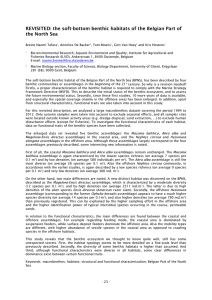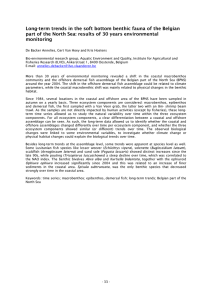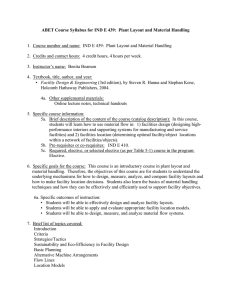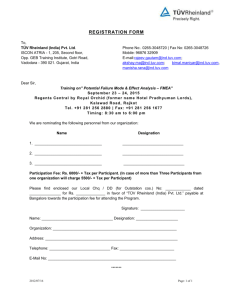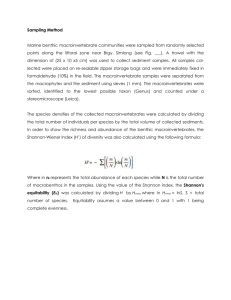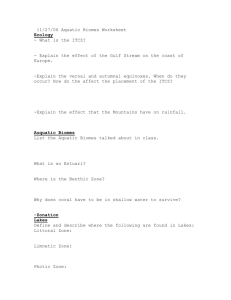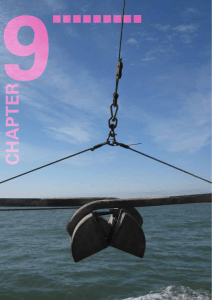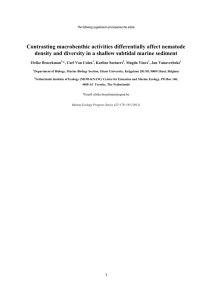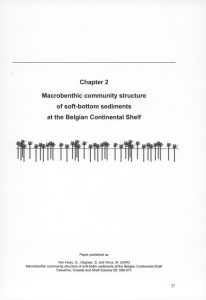REVISITED: the soft-bottom benthic communities of the
advertisement
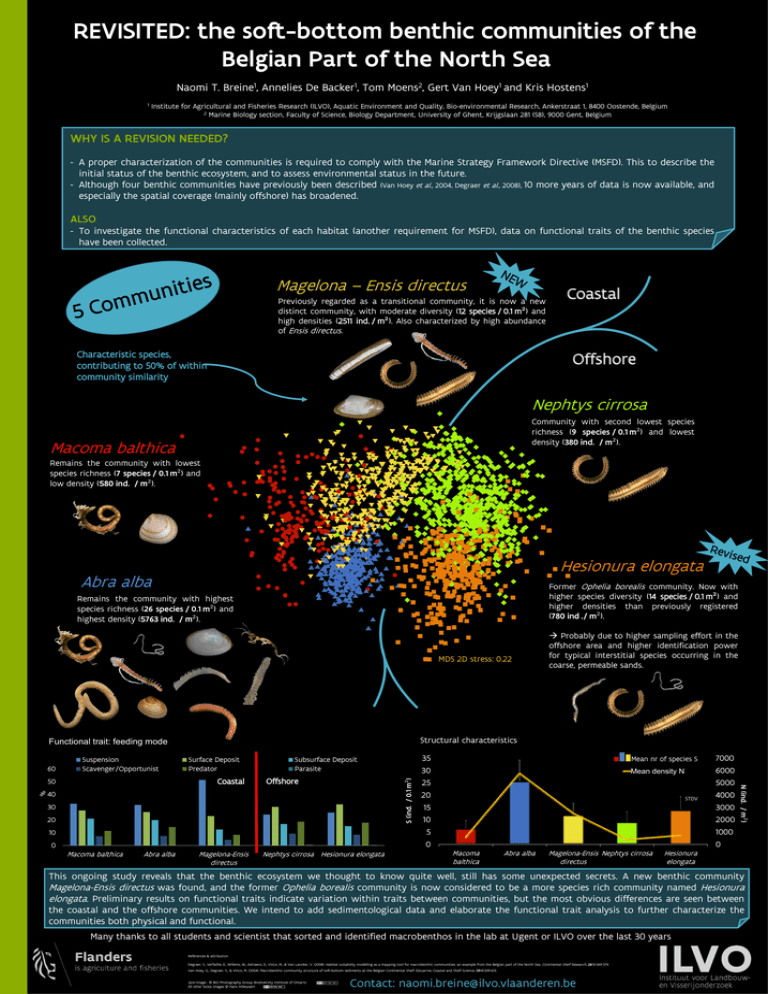
REVISITED: the soft-bottom benthic communities of the Belgian Part of the North Sea Naomi T. Breine1, Annelies De Backer1, Tom Moens2, Gert Van Hoey1 and Kris Hostens1 1 Institute for Agricultural and Fisheries Research (ILVO), Aquatic Environment and Quality, Bio-environmental Research, Ankerstraat 1, 8400 Oostende, Belgium 2 Marine Biology section, Faculty of Science, Biology Department, University of Ghent, Krijgslaan 281 (S8), 9000 Gent, Belgium WHY IS A REVISION NEEDED? - A proper characterization of the communities is required to comply with the Marine Strategy Framework Directive (MSFD). This to describe the initial status of the benthic ecosystem, and to assess environmental status in the future. - Although four benthic communities have previously been described (Van Hoey et al., 2004, Degraer et al., 2008), 10 more years of data is now available, and especially the spatial coverage (mainly offshore) has broadened. ALSO - To investigate the functional characteristics of each habitat (another requirement for MSFD), data on functional traits of the benthic species have been collected. Magelona – Ensis directus Previously regarded as a transitional community, it is now a new distinct community, with moderate diversity (12 species / 0.1 m²) and high densities (2511 ind. / m²). Also characterized by high abundance of Ensis directus. Characteristic species, contributing to 50% of within community similarity Coastal Offshore Nephtys cirrosa Community with second lowest species richness (9 species / 0.1 m²) and lowest density (380 ind. / m²). Macoma balthica Remains the community with lowest species richness (7 species / 0.1 m²) and low density (580 ind. / m²). Hesionura elongata Abra alba Former Ophelia borealis community. Now with higher species diversity (14 species / 0.1 m²) and higher densities than previously registered (780 ind ./ m²). Remains the community with highest species richness (26 species / 0.1 m²) and highest density (5763 ind. / m²). MDS 2D stress: 0.22 Structural characteristics Functional trait: feeding mode Subsurface Deposit Parasite Offshore 40 35 Mean nr of species S 7000 30 Mean density N 6000 25 5000 20 STDV 4000 15 3000 10 2000 10 5 1000 0 0 0 30 20 Macoma balthica Abra alba Magelona-Ensis directus Nephtys cirrosa Hesionura elongata Macoma balthica Abra alba Magelona-Ensis Nephtys cirrosa directus Hesionura elongata N (ind. / m²) Coastal 50 % Surface Deposit Predator S (ind. / 0.1 m²) 60 Suspension Scavenger/Opportunist Probably due to higher sampling effort in the offshore area and higher identification power for typical interstitial species occurring in the coarse, permeable sands. This ongoing study reveals that the benthic ecosystem we thought to know quite well, still has some unexpected secrets. A new benthic community Magelona-Ensis directus was found, and the former Ophelia borealis community is now considered to be a more species rich community named Hesionura elongata. Preliminary results on functional traits indicate variation within traits between communities, but the most obvious differences are seen between the coastal and the offshore communities. We intend to add sedimentological data and elaborate the functional trait analysis to further characterize the communities both physical and functional. Many thanks to all students and scientist that sorted and identified macrobenthos in the lab at Ugent or ILVO over the last 30 years References & attribution Degraer, S., Verfaillie, E., Willems, W., Adriaens, E., Vincx, M., & Van Lancker, V. (2008). Habitat suitability modelling as a mapping tool for macrobenthic communities: an example from the Belgian part of the North Sea. Continental Shelf Research, 28(3):369-379. Van Hoey, G., Degraer, S., & Vincx, M. (2004). Macrobenthic community structure of soft-bottom sediments at the Belgian Continental Shelf. Estuarine, Coastal and Shelf Science, 59(4):599-613. Spio image : © BIO Photography Group, Biodiversity Institute of Ontario All other biota images © Hans Hillewaert Contact: naomi.breine@ilvo.vlaanderen.be
